The Best Snow Safety Gear of 2023
Ski_Mag and Yahoo may earn affiliate commissions on some items promoted through links in the article below. This article originally appeared on Ski Mag
Staying alive in winter conditions requires a totally different set of tools than in warmer weather. You still need to keep yourself hydrated, fed, and out of harm's way, but that's on top of the responsibility to mitigate avalanche problems, glacial hazards, and freezing temperatures. Take the right precautions, sharpen the right skills, and bring the right gear--which we rounded up for you below.
How We Test
Number of testers: 14
Number of products tested: 15
We've had avalanche airbags, satellite communication devices, and three-antennae beacons for years now, but have been waiting on badly-needed upgrades to all of them. This was a season of innovation. Electronic technology is becoming more advanced and reliable, and gear companies are seizing the opportunity.
To put these latest items through the wringer, we sent countless items on ski mountaineering expeditions to Alaska, Greenland, and Iceland, handed them to daily ski tourers in the Rockies, and had known gear-abusers test their mettle and durability. Our primary testing objective: to make sure their improvements didn't compromise functionality in the backcountry, where annoying gear quirks can be a major distraction and safety issue. Testers filled out feedback forms and wrote stream-of-conscious email rants about what they did and didn't like--all of which we've distilled down to our final verdicts on the best snow safety gear of 2023.
Reviews: The Best Avalanche Safety Gear of 2023
Editor's Choice: Ortovox AVABAG LiTRIC TOUR 30 ($1,300-1,400)
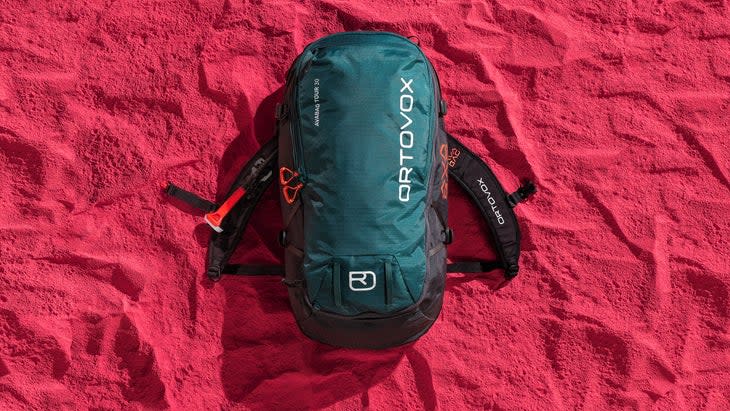
Weight: 5.3 lbs
Size range: 30L, 40L, 28L (S), 36L (S)
In the winter of 2017, Swiss company Alpride launched their E1 electronic airbag system with a supercapacitor that stored electrical energy without any chemical reaction and was not sensitive to environmental temperature, a groundbreaking feature for a ski pack used in cold weather. It was also lighter than existing electronic and canister airbag systems and could be recharged in the field with two AA batteries. This year, Alpride has streamlined the design and size of the new E2 system, which can be found in BCA, Deuter, Osprey, and Scott packs, but LiTRIC--a collaboration between Ortovox and Arc'teryx--is the new player in the electric airbag game with an even lighter and more compact fan system that uses a lithium-ion battery, instead of disposable and leak-prone AAs, as a secondary power source to recharge the supercapacitor after deployments. Another impressive feature: the trigger handle is twisted 180 degrees on and off so you don’t accidentally deploy the balloon in a crowded tram or in the back of a snowcat.
LiTRIC lasts at least 60 hours with the system turned on when fully charged, making it possible to use on multi-day ski tours without recharging. It can also be inflated at least twice on that single charge--which is the same as the E1 and E2 systems as long as their batteries have sufficient charge to replenish the supercapacitors. However, LiTRIC claims to be a more reliable secondary charging source with the lithium-ion than the E1 and E2 AA batteries because when you plug the LiTRIC in to recharge, you know you’re getting a full recharge (although E2 does now have a small LCD screen with a battery meter on it). Both the LiTRIC, E1, and E2 are better than the BD Jetforce, which has a lithium-ion battery as it’s main power source for the fan, whereas a supercapacitor is an engine (not a battery) that delivers a quick and powerful transfer of energy to the fan that inflates the airbag.
Related: Are new safety gadgets keeping us safer in the backcountry, or giving us false confidence?
It takes just 25 minutes to fully charge the LiTRIC (about half the time of Alpride), and the compact airbag/battery system only weighs 2.4 pounds. LiTRIC is about four ounces lighter than Alpride's new E2 system and nine ounces lighter than the previous E1 system. Two former gear editors brought this on a fjord skiing trip to Greenland, and both agreed that the LiTRIC was the first airbag pack they've tested that wasn't infuriatingly clunky, difficult to pack, bulky, or heavy thanks to the reduced battery and airbag size. The E2 system airbag is nearly 10% larger, which in theory, provides more float because it's larger. But, the LiTRIC airbag system has the double wall design--an internal welded bladder with a high tenacity ripstop shell--which means a more durable, tear resistant airbag. Plus, at 150 liters in volume versus the E2's 162 liters, LiTRIC still complies with the norm.
Ortovox's German engineering makes all the difference in this pack, keeping it simple with no unnecessary buckles or loops but maintaining key features like big, mitten-friendly zipper pulls, an avy tool compartment, an external pocket, and comfortable yet low-profile, not-too-thick shoulder straps. The pack also comes with removable straps for every accessory you could want to carry, including a helmet net, A-frame and diagonal ski carry straps, and snowboard straps. The system is fairly easy to remove, so you could also use the pack for other activities like ice climbing and in-bounds skiing. The only downside: testers wished there was at least one hip belt pocket for quick-access items like chapstick and a scraper.
So what's the difference between the Ortovox Avabag Litric Tour versus the Arc'teryx version? Not only does the Ortovox pack come in at $500 dollars less than the Arc’teryx LiTRIC version, but the Ortovox Zip-On System also gives you more pack volume options, 28 (S)-, 30-, 36 (S)-, 40-liters, in comparison to the Arc’teryx’s 16-, 32-, and 42-liter choices.
Bottom line: The fastest and lightest electric airbag comes in a well thought-out backpack design
Read the full review for a more in-depth look at strengths, weaknesses, and tester feedback.
Read more: The best backcountry skiing and touring backpacks
Atomic Backland CTD ($410)
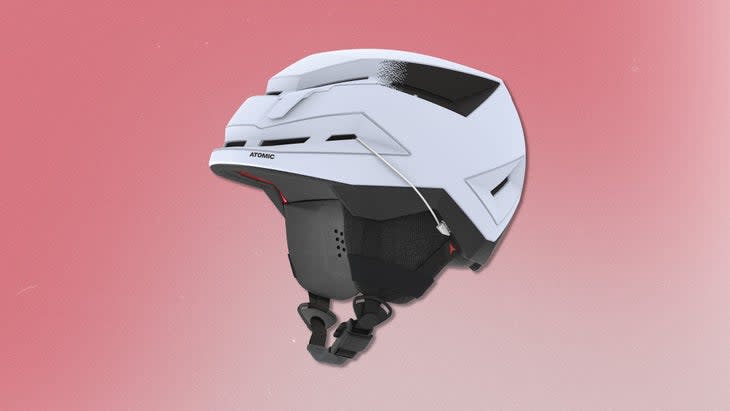
Weight: 1 lbs 1 oz
Sizes: 51-55cm, 55-59cm, 59-63cm, 63-65cm
The worst time for self-assessment might be just after hitting your head. Enter the Backland CTD. This brain cage has technology that tells you if an impact was significant enough to need a new helmet or even medical attention. How? Atomic's Shocksense technology evaluates the impact force and determines how bad it was; these sensors connect to a smartphone app (iOS and Android) to communicate whether you need help. The app even sends an automatic SOS alert to pre-set emergency contacts, including your GPS location. The CTD weighs only 370 grams and is multi-norm certified for skiing, biking, and climbing. It comes with a removable goggle clip, removable and washable liner, and AMID--a spinning dome of dual density foam that absorbs impacts and deflects force from all directions. The wide vents dumped enough heat for our testers to leave it on while skinning up a warm slope on a late spring expedition in Greenland. Caveats: The vents tend to whistle annoyingly in the wind, and some found the fit on the snugger side.
Bottom line: Versatility meets lightweight, ventilated design with an emergency technology feature
Garmin InReach mini 2 ($399)
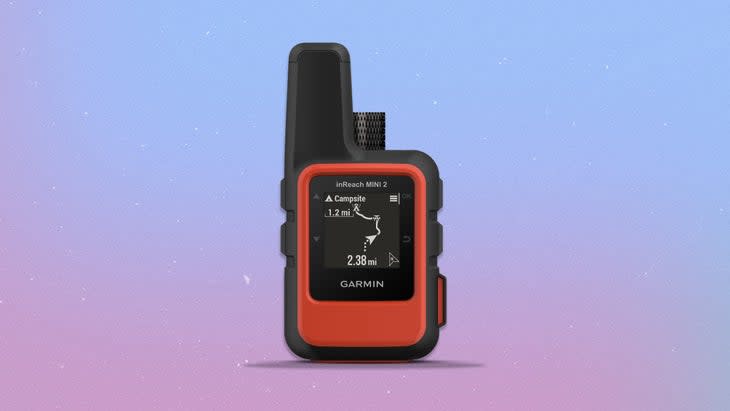
Weight: 3.5 oz
Dimensions: 4"x2"
The second iteration of the InReach mini triples the battery life of the previous generation. You can now use it for 30 days in 30-minute tracking interval mode. New features include compatibility with Garmin's new Explore app (which improves upon the old Earthmate app with a smoother user experience) and an improved TracBack navigation function, which starts storing your route as soon as you turn the device on in case you forget to begin tracking. The 3.5-ounce, snack-bar sized, waterproof device has a 1-inch screen that's glare resistant for sunny days. The user experience is very basic and simple--you navigate the menu up and down, and you can type messages directly on the device, or you can send messages you preloaded ahead of time. Our testers used the mini for quick, detailed, hour-to-hour updates on fast-changing weather during weeks-long trips to Alaska and Greenland. The SOS feature can be triggered from the device, the app, or remotely from a Garmin smartwatch.
Bottom line: Tracking and battery life upgrades combine and pair with a slicker mobile app
Sponsor Content
Headwall 55L Backcountry Ski Pack ($449)
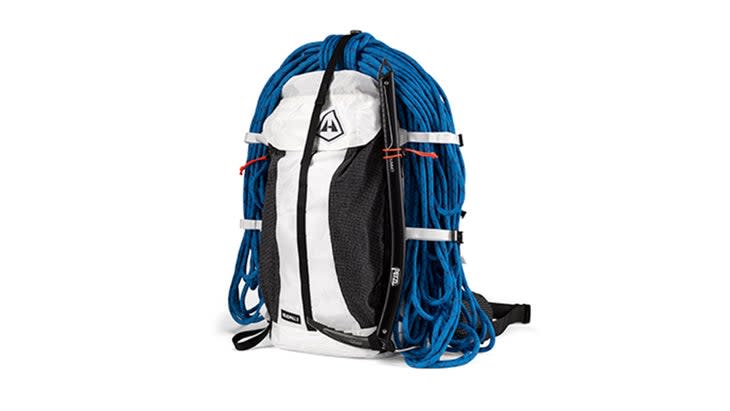
This is not your average pack. As the first backcountry ski pack made with Dyneema Composite Fabrics, Hyperlite Mountain Gear is bringing its ultralight expertise to new terrain. At less than 40oz (size M), the Headwall 55 is abrasion resistant to withstand whatever the mountain throws at you and has the reliability you need to carry valuable and essential gear. The 55L pack, designed with ski legend Cody Townsend, is built to carry skis, snowboards, or split boards and features a dual closure avi pocket with organizational sleeves to keep your probe and shovel easily and quickly accessible.
G3 Spade ($76)
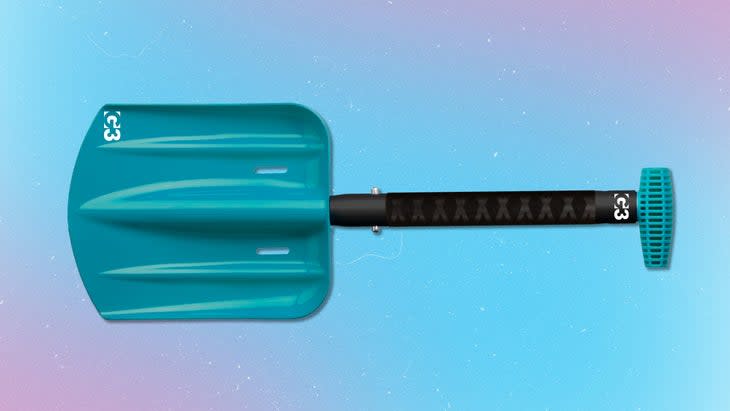
Weight: 1 lb 7.6 oz (D-grip), 1 lb 6.2 oz (T-grip)
Blade Width: 20.5cm/8.1in
Blade Length: 25cm/9.8in
Packed Length: 46cm/18in
Make shoveling easier with this tool, which has a thick, textured shaft for more secure grip and a rounded blade that penetrates snow better than a flat edge. It's available in either a D-Grip or T-Grip on the telescoping handles, with the D-grip providing a firmer grasp, and the T-grip coming in at 40 grams lighter (as opposed to the D-grip option's 670 grams). That sturdy build and versatile handle configuration meant that this sub-one-and-a-half-pound shovel was substantial enough for our tester to build out a whole winter camping kitchen on an 11-day splitboard mountaineering glacier trip to Alaska's Tordrillo range in April. It had no trouble digging through deep, heavy Pacific Northwest snowpacks either (albeit with no hoe function), and the eight-inch-wide, low-profile blade still fit in smaller backpacks.
Bottom line: A compact tool that gets all jobs done
Petzl Fly ($100)
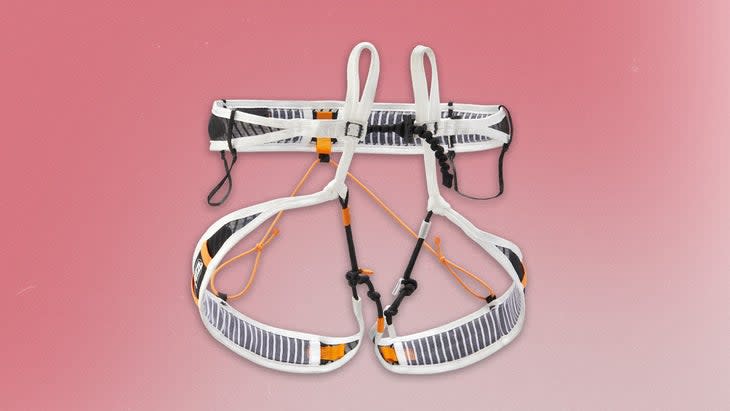
Weight: 4.6 oz
Designed for very technical mountaineering or lightweight glacier travel, this harness has leg straps that can be donned with both feet on the ground so you won't have to worry about removing your crampons or skis in spicy terrain to step through leg loops. Our tester who tried it in Alaska's Ruth Gorge said they brought another harness as a back-up because this one clocked in at just 100 grams without the removable padding (130 grams with), and the thin nylon straps and metal-free girth hitch system seemed pretty minimal. But the knots felt sturdy and held strong when traveling roped up on a two- and three-person team, as did the minimalist waist belt closure, and the lingerie-slim harness was easy to walk in with bulky snow pants.
Bottom line: For ultralight glacier trekkers who count ounces.
Compeed Advanced Blister Care Sports Medium ($9.99)
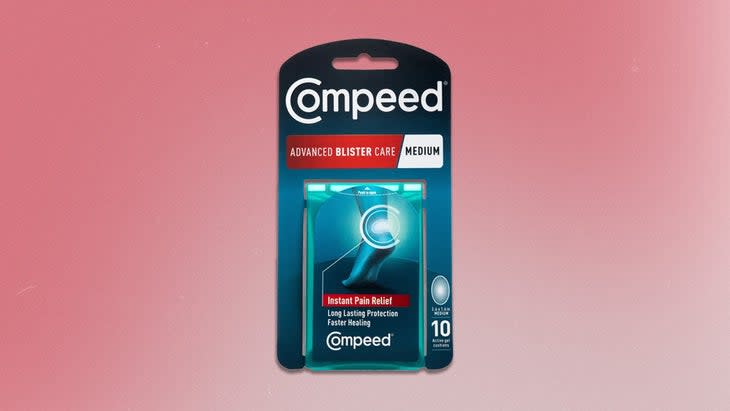
Dimensions: 1.65" x 2.68"
Previously, the best way to deal with blisters was to cover them with tape as soon as the spot felt hot. But sometimes, that doesn't work, and you have to suffer through a long walk out of the backcountry with burning ankles. Not with these hydrocolloid gel cushions, which absorb the moisture around your blisters thus preventing them from getting worse. The waterproof, breathable material flexes with your skin and stays on for several days, showers be damned. This comes in clutch when you develop blisters partway through a long adventure. "Even after pre-taping them, my heels were bleeding within the first hour of our all-day Gore Range traverse," said our Colorado tester. He put these bandages on his feet, and was able to finish the day relatively pain free.
Bottom line: Chronic blister sufferers need these in their pack
Black Diamond Recon X ($300)
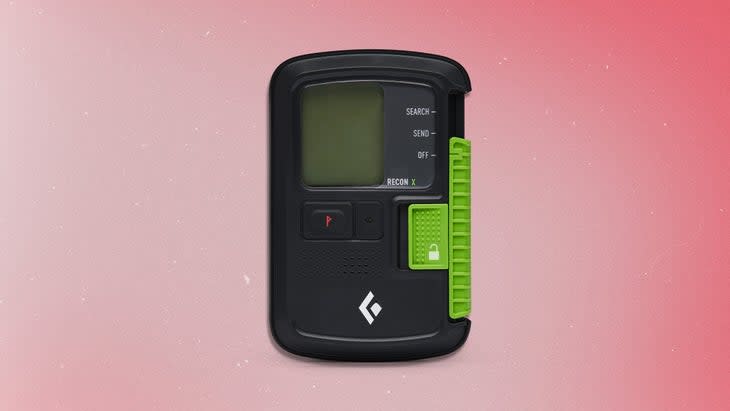
Weight: 8 oz with batteries
Dimensions: 118x76x29 (4.7″ x 3″ x 1″)
At first glance, the Recon X is a simple, streamlined beacon for everyday users with a 60-meter range and a glove-friendly, ergonomic grip. The special sauce: Bluetooth capability, which allows you to manage the beacon's settings in the Pieps smartphone app. This includes a setting that allows you to auto-revert to send mode if you're immobile for four minutes while the beacon's still in search (which could be potentially life-saving if another avalanche event occurred while you were searching for other buried partners and became buried yourself). The app performs software updates, checks on the beacon's functions to ensure that the antennas are calibrated and the buttons and switches work, and includes an instructional training program (though it goes without saying that this is not a replacement for an avalanche safety course), that runs you through mock avalanche burial situations with diagrams. The beacon also features interference protection, blocking out everything but 457 hertz signals in search mode and automatically switching to the antenna with the strongest signal in send mode.
Bottom line: For everyday users who appreciate tech features and the accompanying app
How to Buy
We love a good deal, and making gear last a long time is a point of pride for our testers. That said, when it comes to safety gear, it's best to be the original owner. You never know what kind of compromising events someone else's gear has been through, and the consequences of a malfunction are too high in this category. We recommend supporting your local independent gear shop and asking their experts for advice on which products are most suitable for you.
More 2023 Gear Reviews
The best backcountry skis of 2023
The best backcountry ski boots of the year
The best alpine ski boots of the year
For exclusive access to all of our fitness, gear, adventure, and travel stories, plus discounts on trips, events, and gear, sign up for Outside+ today.

